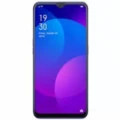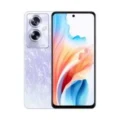Oppo A36
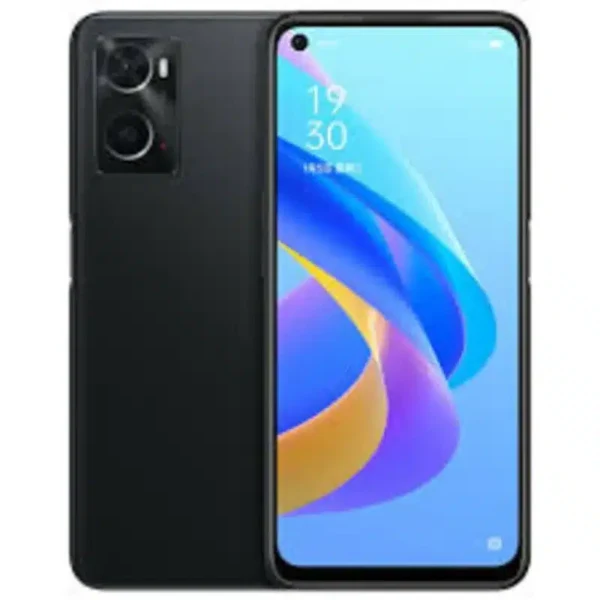


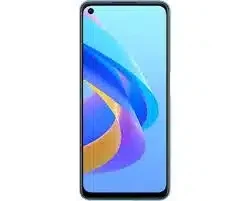
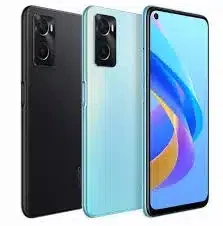
- : 6/8GB RAM Snapdragon 680 4G
- : 6.56" 720x1612 pixels
- : 5000mAh
- : 13MP 1080p
Oppo A36: Capable Mid-Ranger with Large Display and Solid Battery
Released in January 2022, the Oppo A36 caters to users who want a balanced smartphone experience without spending a fortune. Here’s a breakdown of its key features:
Display and Build
The A36 boasts a large 6.56-inch IPS LCD display with a 720 x 1612 pixel resolution and a smooth 90Hz refresh rate. This offers a comfortable viewing experience for everyday tasks and entertainment. The phone comes in classic black and blue color options.
Performance and Software
Under the hood, the Oppo A36 runs on the Qualcomm Snapdragon 680 4G processor, capable of handling daily tasks efficiently. Storage options include 128GB or 256GB, paired with either 6GB or 8GB of RAM, allowing you to choose the configuration that best suits your needs. The phone runs on Android 11 with Oppo’s ColorOS 11.1 on top.
Camera
The A36 sports a dual rear camera system with a 13MP main sensor for capturing decent photos in good lighting. A 2MP depth sensor assists with portrait mode effects. On the front, an 8MP selfie camera lets you take video calls and capture selfies.
Battery
A long-lasting 5000mAh battery keeps the Oppo A36 powered throughout the day. While fast charging isn’t top-of-the-line, it supports 18W to get you back up and running quickly.
In Conclusion
The Oppo A36 offers a large display with a smooth refresh rate, a capable processor, ample storage options, and a long-lasting battery. It’s a solid choice for users who prioritize everyday functionality and affordability.
Want to Learn More?
Visit the Oppo Official Website
Still Unsure?
Explore Other Options at the Oppo Store
Specs
Network
| 2G Network GSM 850 / 900 / 1800 / 1900 - SIM 1 & SIM 2 (dual-SIM) CDMA 800 / 1900 |
GSM 850 / 900 / 1800 / 1900 - SIM 1 & SIM 2 CDMA 800 |
| 3G Network | HSDPA 850 / 900 / 2100 |
| 4G Network | 1, 3, 5, 8, 34, 38, 39, 40, 41 |
| Speed | HSPA, LTE |
LAUNCH
| Announced | January, 2025 |
| Status | Available. Released 2022, January 14 |
BODY
| Dimensions | 164.4 x 75.7 x 8.4 mm (6.47 x 2.98 x 0.33 in) |
| Weight | 185 g (6.53 oz) |
| SIMs SIM (Subscriber Identity Module) is a small card that contains mobile network subscriber's account information. This allows the phone using the card to attach to a mobile network. The SIM card is most commonly associated with GSM and UMTS mobile networks. Moving a SIM card from one phone to another allows a subscriber to switch mobile phones without having to contact their mobile network carrier. SIM cards can also be used by a phone to store limited amounts of data, such as phone numbers and text messages. | Dual SIM (Nano-SIM, dual stand-by) |
Display
| Display Type Display Technology => A number of display technologies and types used in mobile phones => TFT (Thin Film Transistor), IPS (In-Place Switching), OLED (Organic Light Emitting Diode), AMOLED (Active-Matrix Organic Light-Emitting Diode), Super AMOLED (an even advanced version of AMOLED), Resistive Touchscreen (Resistive touchscreens contain two layer of conductive material with a very small gap between them which acts as a resistance), Capacitive Touchsceen (Capacitive touchscreen technology consists of a layer of glass coated with a transparent conductor) | IPS LCD, 90Hz, 480 nits (typ), 600 nits (HBM) |
| Size | 6.56 inches, 103.4 cm2 (~83.1% screen-to-body ratio) |
| Resolution | 720 x 1612 pixels, 20:9 ratio (~269 ppi density) |
PLATFORM
| Operating System OS => Every computer system run on a base software called Operating System (OS). Operating System controls all basic operations of the computer (such as smartphone, PDAs, tablet computers and other handheld devices). The Operating System allows the user to install and run third party applications (apps), apps are used to add new functionality to the device. | Android 11, ColorOS 11.1 |
| Chipset Chipset is a group of integrated circuits designed to perform one or a more dedicated functions, often with real time computing constraints, Popular smartphones are equipped with more advanced embedded chipsets that can do many different tasks depending on their programming. | Qualcomm SM6225 Snapdragon 680 4G (6 nm) |
| CPU CPU (Central Processing Unit) mostly known as processors, CPU processes instructions in order to carry out certain functions that make your device operate properly. Processors are often described as the brain of computers, smartphones and tablets, Smartphones and tablets rely on processors to carry out their every task, Processors are an incredibly important factor in selecting any type of computing device, including your smartphone. | Octa-core (4x2.4 GHz Kryo 265 Gold & 4x1.9 GHz Kryo 265 Silver) |
| GPU GPU (Graphics Processing Unit) is a single-chip processor designed to rapidly manipulate and alter memory to accelerate the creation of images in a frame buffer intended for output to a display, This includes things such as lighting effects, object transformations, and 3D motion. | Adreno 610 |
MEMORY
| Card Slot Memory Card Slot is a special slot for inserting a memory card. Memory cards allow you to expand the phone's built-in memory, A memory card (sometimes called a flash memory card or a storage card) is a small storage medium used to store data such as text, pictures, audio, and video, for use on small, portable or remote computing devices such as mobile phones, mp3 players, digital cameras. | microSDXC |
| Internal | 128GB 6GB RAM, 128GB 8GB RAM, 256GB 8GB RAM UFS 2.2 |
MAIN CAMERA
| Cameras Specs Today’s smartphones come equipped with a very comprehensive set of camera related specifications. Our smartphone, for many of us, has become our primary camera due to it being the one we always have with us. |
13 MP, f/2.2, 26mm (wide), 1/3.06", 1.12µm, PDAF 2 MP, f/2.4, (depth) |
| Video | 1080p@30fps |
| Camera Features | LED flash, HDR, panorama |
SELFIE CAMERA
| Cameras Specs Today’s smartphones come equipped with a very comprehensive set of camera related specifications. Our smartphone, for many of us, has become our primary camera due to it being the one we always have with us. |
8 MP, f/2.0, (wide) |
| Features |
HDR |
| Video | 1080p@30fps |
SOUND
| Loudspeaker | Yes |
| 3.5mm jack | Yes |
COMMS
| WLAN |
Wi-Fi 802.11 a/b/g/n/ac, dual-band, Wi-Fi Direct |
| Positioning |
GPS, GLONASS, GALILEO, BDS, QZSS |
| Bluetooth Bluetooth is a wireless communications technology for exchanging data between mobile phones, headsets, computers and other network devices over short distances without wires, Bluetooth technology was primarily designed to support simple wireless networking of personal consumer devices. | 5.0, A2DP, LE, aptX HD |
| Infrared Infrared connectivity is an old wireless technology used to connect two electronic devices. It uses a beam of infrared light to transmit information and so requires direct line of sight and operates only at close range. | |
| USB | USB Type-C 2.0, OTG |
| NFC NFC (Near field communication) is a set of standards for smartphones and similar devices to establish peer-to-peer radio communications with each other by touching them together or bringing them into proximity, usually no more than a few inches. | |
| Radio |
Features
| Sensors Sensors are electronic components that detects and responds to some type of input from the physical environment. The specific input could be light, heat, motion, moisture, pressure and location, The output is generally a signal that is converted to use in computing systems, a location sensor, such as a GPS receiver is able to detect current location of your electronic device. |
Fingerprint (side-mounted), accelerometer, proximity, compass |
BATTERY
| Battery Type Battery Type => Cell phones run on various kinds of batteries depending on the manufacturer, phone size or shape and features. There are basically four types of cell phone batteries => Lithium Polymer, Lithium Ion, Nickel Metal Hydride and Nickel Cadmium. | Li-Ion (Lithium Ion) |
MISC
| Colors |
Black, Blue |
| Model | PESM10 |
| Price | About 220 EUR |
TESTS
Reviews
Disclaimer Note
We strive to maintain accurate and up-to-date content on our website for general information purposes only. Please refrain from using the material for business, legal, or any other decisions.


